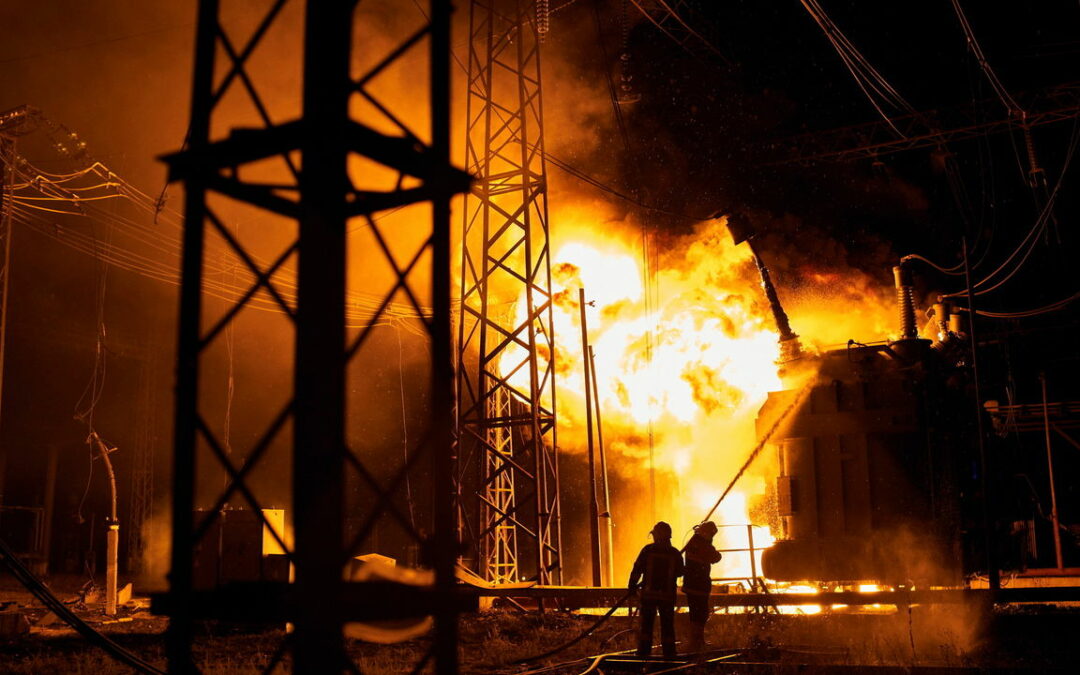LAST WINTER, having struggled to achieve progress on the battlefield, Russia sought to destroy the will of Ukraine’s people by intensifying missile attacks on civilian, as well as military, targets. The effort to break the population’s spirit failed, but strikes on Ukraine’s electricity infrastructure did cause widespread damage. Rolling blackouts closed down parts of the economy; many Ukrainians had to live without power and heat. A fresh round of attacks in September 2023 looked like the start of another campaign to destroy the Ukrainian grid. Ukrainian and Western officials told the New York Times that Russia is now producing missiles at a faster rate than before the war, raising fears that Ukraine will face an even tougher winter this time. What is the state of Russia’s stockpile?
Russia’s long-range arsenal includes a wide variety of ballistic and cruise missiles. The former travel at high speed and altitude along a predictable arc; the latter hug the ground and can take roundabout routes. Russia’s pre-war stockpile, including some Soviet-era rockets, was thought to number around 3,500. (These estimates do not include surface-to-air missiles that Russia has adapted so they can hit targets on the ground, such as the S-300.) Russia has used a lot of these reserves since the invasion began. According to Ukrainian figures, Russia launched around 2,500 long-range missiles between February 2022 and May 2023, an average of about 170 a month. Intense activity over the summer, as Ukraine began its counter-offensive, has depleted the reserves even further.
But missiles are not the whole story. Russia has also used Iranian Shahed loitering munitions, sometimes known as “kamikaze drones”, to attack Ukrainian infrastructure. The Shaheds are smaller and less powerful than Russian cruise and ballistic missiles but cheaper and simpler to make. They have become a crucial part of Russia’s arsenal. Russia has almost certainly started producing the devices domestically. Ukrainian intelligence says that Russia currently aims to build or assemble 200 a month. A giant new factory in the Alabuga Special Economic Zone in Tatarstan, a region in central Russia, could eventually make more than 1,600 Shaheds a month, although it will take over a decade to reach that capacity.
Russia wants to ramp up missile production, too. The Jamestown Foundation, a think-tank in Washington, found that before the war Russia was making perhaps eight cruise missiles and slightly more ballistic missiles per month, up to a total of just 20. Ukraine’s Western allies hoped that sanctions would reduce this number. But Russia is getting around sanctions by stockpiling parts, exploiting legal loopholes and importing through third countries.
Indeed, recent estimates indicate that Russia has been able to increase its missile output. Ukrainian intelligence has estimated production at anywhere from 52 to 90 per month. In August Vadym Skibitsky, deputy head of Ukraine’s military intelligence service, even suggested that Russia aims to make more than 110 a month. He noted that actual output may fall below this goal.
Yet Ukraine’s missile force is also growing in strength. New Western-supplied rockets—including America’s ATACMS, a ballistic missile that the White House agreed to send in September—will increasingly enable Ukraine to attack ammunition stockpiles and missile-production facilities. And Ukraine is increasingly able to retaliate with its own attacks on Russian infrastructure. On September 28th Ukrainian drones struck an electricity substation in a village in Kursk, a region close to the border with Ukraine. Causing significant damage to Russia’s grid, which is dispersed across the country’s vast territory, will be a challenge. Yet Ukraine’s president, Volodymyr Zelensky, has signalled that strikes within Russia’s borders will only increase.
Russia will attack civilian infrastructure again this winter. But the boom of missiles will increasingly give way to the crackle of Shaheds. The extent of the damage will depend on how many Russia can produce—and how quickly. ■









